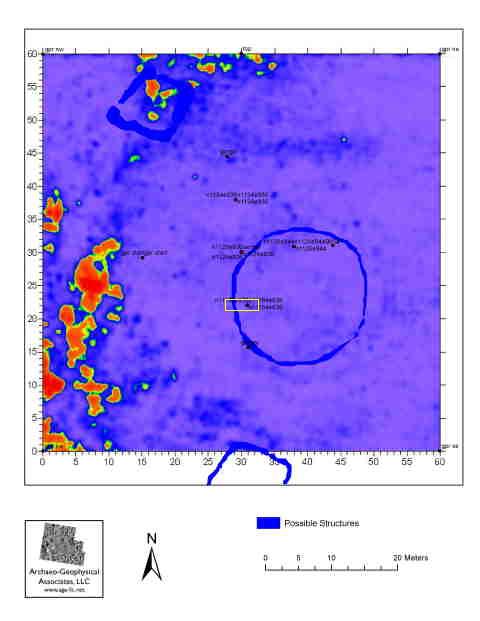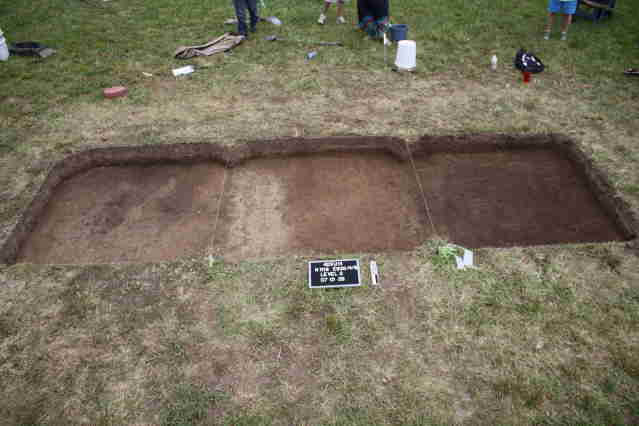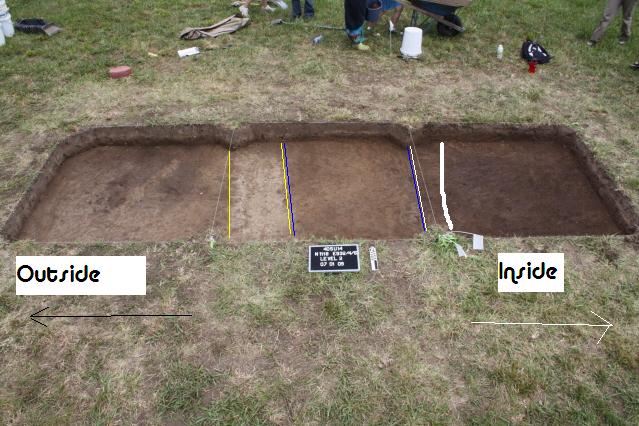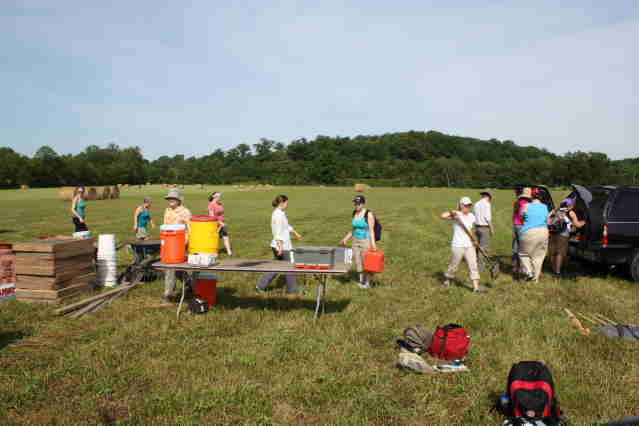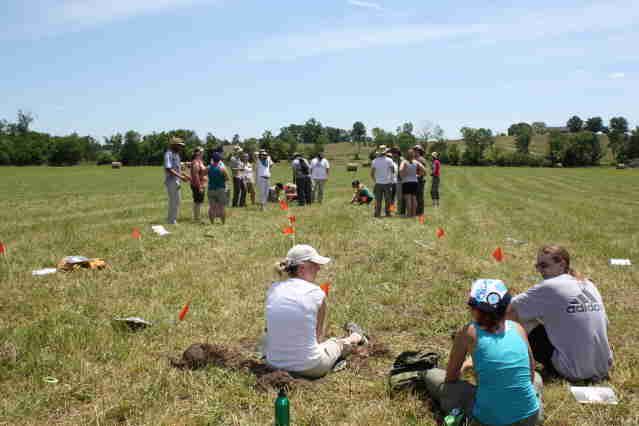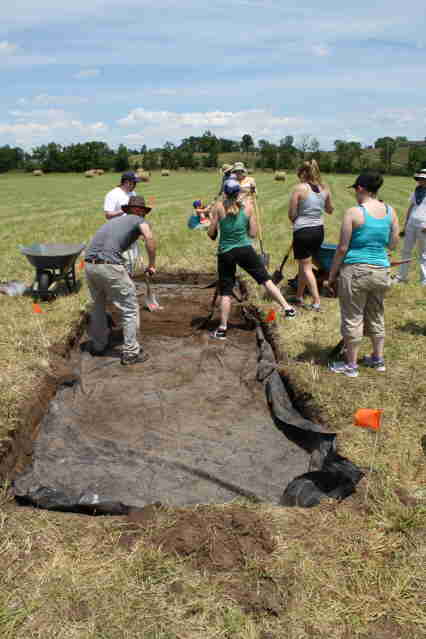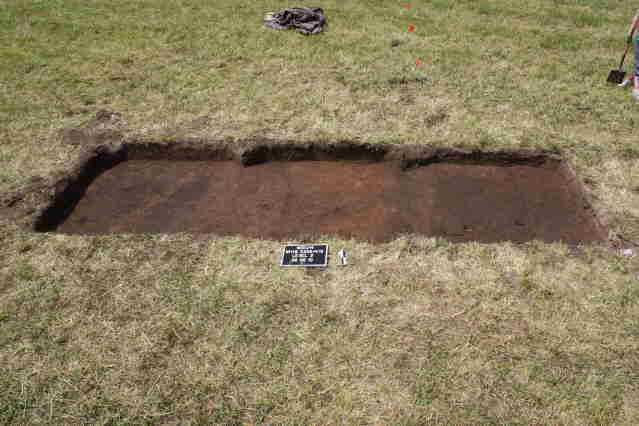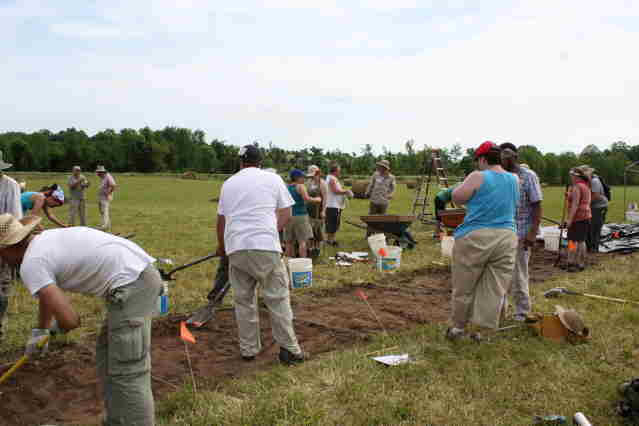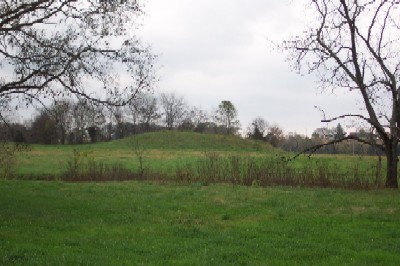
Field Projects: 2005-2011

| CASTALIAN SPRINGS ARCHAEOLOGICAL PROJECT Field Projects: 2005-2011
|
On June 7, we held an all-day orientation meeting on the MTSU campus. Fieldwork will commence on June 8.
After an orientation session on campus yesterday, we started our
first day in "The Field" today -- although sunny and warm, a nice day
with a good breeze most of the time. We have our largest crew ever on
this project this summer -- a total of 25 including students and
staff. This summer we are focusing our efforts on what we hope will prove to
be one of the most important public buildings at Castalian Springs. We
started investigations of this feature of the site briefly at the end of
last summer's work -- pursuing the results of our magnetometer and
ground-penetrating radar work. If the results of those surveys pan out,
we will be investigating a circular building 50-60 feet in diameter. Our brief investigations of this structure last summer -- three
excavation units crossing the western portion of the wall -- revealed a
striking pattern suggesting this was indeed a large major building on the
northeastern corner of the town plaza or center.
The different soil colors (outside and inside) as shown below, were
very promising when we closed up our investingations last summer. This morning, our first task was to transport our equipment and
supplies to the site to prepare for our five weeks of work here. Then we shifted to laying out seven new units for our crews -- these
units will start at the edge of our three units from last summer and
proceed eastward. This set of units should completely cross the large
building -- revealing the easternmost wall of the circle and the features
in the very middle of the structure. We anticipate a large central
fireplace or other type of feature to be there.
As others worked on the new units, most of the crew took the dirt out
of our three excavation units from last summer. These were lined with
plastic and filled with dirt last July to protect the unexcavated features
from the elements. After removing the plastic, the features from last year showed up in an
even more spectacular fashion than before. Last summer, during the
drought, the soil was very dry -- this summer, after our torrential rains
of the past few weeks, the soils were moist, which enhances the
differences in soil color.
After lunch, we had opened seven new excavation units and we had
finished stripping the sod from these -- ready to begin exposing what we
hope will prove to be a remarkable and important building over the next
five weeks. Tomorrow morning, we will start bright and early to work our way
through the plowzone to see what appears!
